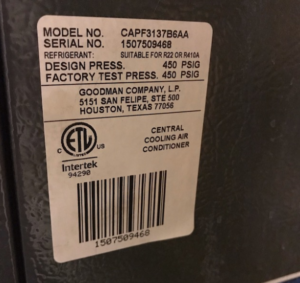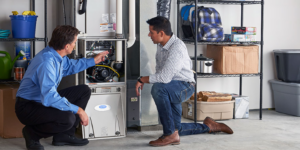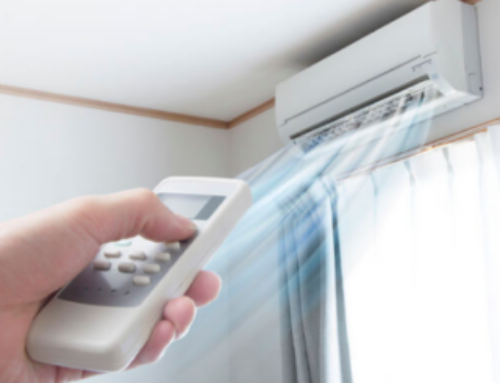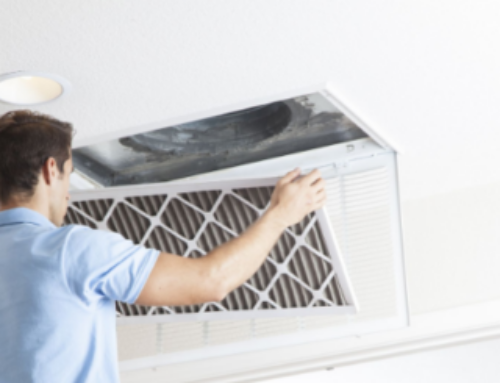How Do I Determine the Age of a Furnace?
As you settle into your new residence, there are many things to consider. You are adjusting to the latest appliances and different spaces in the apartment. Some homeowners may need to assess whether they need to make upgrades or updates in the future. Your heating and cooling system should be on your list of potential tasks, you should also know the Age of a furnace you are using.

Generally, we do not give much thought to our furnaces as long as they function without problems. Our attention is immediately drawn to a problem when it occurs or poses challenges. Therefore, it is a good idea to find out the age of your furnace. Then you will better understand what you may need to deal with in the future. This is not limited to homeowners entering a new residence. If you are uncertain of the age of your furnace, you should take the time to find out.
Most homeowners only consider their furnace once it breaks down or stops working. You may wonder how old your furnace is when that happens, and determining its age can be tricky, but there are a few ways to do so. We will discuss several methods below that you can use to determine the age of your furnace.
How To Determine Your Furnace’s Age
In most cases, your furnace should have a sticker on its exterior or interior paneling. If the model and serial number aren’t on the outside, look inside the paneling and see if they’re there.
Write down the serial number or take a picture for future reference. Find out the manufacturing date by visiting the manufacturer’s website. Your serial number can usually provide insight into the age of your system, but this varies between brands. Try searching “find manufacturing date of (YOUR BRAND) furnace.”
Some brands display manufacturing details such as the month and year. As can be seen in the photo below, the serial number indicates that this particular system was manufactured in July 2015.

Manufacturer’s Label
By looking at the manufacturer’s label, you can determine the age of your furnace. Most new furnaces include this label, usually on the front of the unit. There will also be a date of manufacture listed on this label.
Serial Number
You can also look for the serial number for those who need help locating the manufacturer’s label or have removed it. You can find the number on the rating plate of the furnace (a label that provides information about the equipment’s energy consumption and manufacturer).
You can find your furnace’s rating plate in various places depending on its make and model, so you may need to check its front, back, sides, top, or interior. There are cases in which the rating plate also lists the date of manufacture, so you do not need to worry about the serial number.
The serial number needs to be “decoded” after you have found it. The serial numbers of HVAC manufacturers are arranged differently. As an example:
- Lennox: It is common for these systems to have serial numbers with four numbers and a letter. The first and second numbers represent the factory that manufactured the unit. The third and fourth numbers indicate the year of manufacture of the unit. Using the serial number 1210B12345 as an example, this would mean that the manufacturing year was 2010 (12 would refer to the factory).
- Carrier/Bryant/Payne: This manufacturer often uses serial numbers to indicate the unit’s manufacturing week and year. In the serial number, the first two digits identify the week of the year. The second two digits represent the year. For instance, a Carrier furnace with serial number 0205 has a manufacturing time in Week 2 of 2005.
If you are unfamiliar with decoding a serial number, try searching for “how to read a [name of manufacturer] furnace serial number” online. Generally, the result will appear toward the top of the page. You can also determine the age of your unit by contacting the manufacturer and providing them with the serial number.
Warranty Information
Looking at your furnace’s warranty information is another way to determine the age of the unit. The date of purchase is likely to be listed on the warranty document. Additionally, you can contact the manufacturer to determine when you purchased your furnace.
Service or Maintenance Tag
HVAC contractors sometimes leave a tag or sticker on the unit that indicates the equipment’s last servicing or maintenance. In some cases, this tag also lists the day of the product’s installation, which should be close to the product’s manufacturing date. Otherwise, you may contact the HVAC contractor who installed your system. You should be able to get a record of the installation and information about the equipment that your contractor installed.
What Is The Importance Of Your Furnace’s Age?
In most cases, when you’ve had your furnace for about 15 years, it’s time to consider a replacement system to help improve efficiency. Compared to older models, newer models tend to have higher energy efficiency ratings, so you’ll certainly benefit from technology advancements.
Besides the age of your furnace, there are other factors to consider when deciding if you need to buy a new one. The following are a few of these signs:
- An increase in energy costs without any significant changes to the thermostat.
- Repairing the furnace more frequently and at a higher cost.
- There is an apparent decline in home comfort levels—you are never warm enough at home.
As A Last Resort
It might be a good idea to contact the manufacturer of your furnace. When uncertain of the serial number, you can take a picture of the unit and show them the rating plate if you wish. That information may enable them to identify your furnace and determine its age.
Gibber Services strives to provide a fast and fair repair service. For unmatched customer service, contact us at 901-422-1258 for maintenance, repairs, or system replacement.









